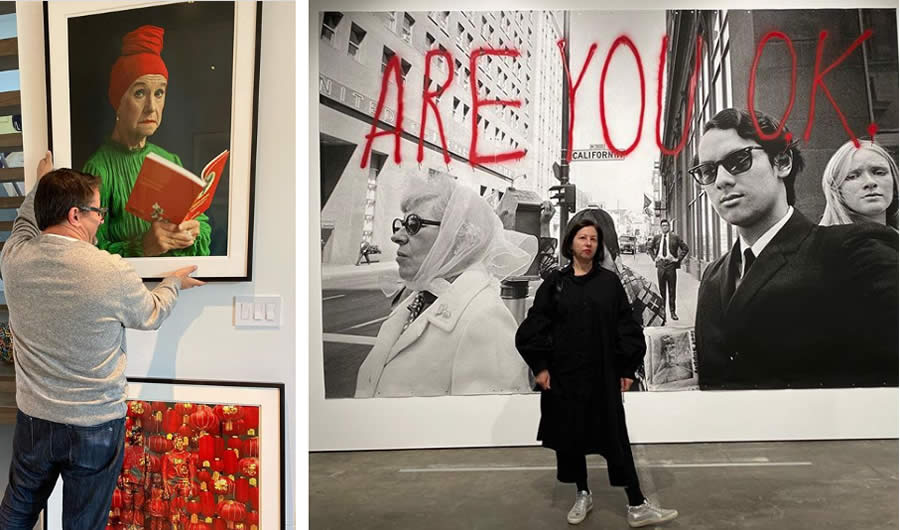BAY AREA ART LOVER SPEAKS ABOUT ACQUIRING WHAT YOU LOVE WHILE NAVIGATING THE ART WORLD
By Reilly Clark
“Collect what you love.”
Collectors, curators and art advisors exchange these words frequently. But what does it really mean to collect what you love? Even the most confident art lovers can feel anxious about the status of their collections. And even the most passionate collectors can wonder what they are missing, what names would round out their collections. The Intelligent Collector spoke with Palo Alto-based collector Pamela Hornik about the pressures of the art world and what it really means to collect what you love.
FINE ART
Pamela and David Hornik bring their love for contemporary art to the San Francisco Bay Area. They regularly invite guests to their home to share their collection and loan work to the nearby Iris & B. Gerald Cantor Center for Visual Arts at Stanford University. They collect works of figurative art, including works by Andy Warhol, and increasingly works by living artists like Jordan Casteel and Wesaam Al-Badry. David is a partner at the Silicon Valley venture capital firm August Capital. Pamela can be seen visiting arts institutions around the Bay Area, volunteering at the Cantor Arts Center and sharing work by emerging artists on Instagram (@pamelahornik), which she champions as a platform for connecting artists and art lovers.
Enlarge

“Our collection is a very personal collection,” Pamela says. David works as an investor but does not think of his art as an asset class. “His entire job is investing,” Pamela says, “but he doesn’t do any of that in his personal collecting.” The couple considers art their joint passion and only acquire new work if they both love it. They do not collect to build a “collection,” as such, but a living organism driven by their shared passion for art.
Nevertheless, Pamela occasionally feels the pressures of the art world. “Sometimes I think to myself,” Pamela says, “should I think more about value?” The art world is famously concerned with status and even established, esteemed collectors can sometimes feel status anxiety. Pamela remembers defending her collection to people before they had even seen it. Because Pamela and David are driven by passion and because their collection is so personal, they had to learn to be confident in themselves. “You have to find your place in the art world and feel confident there,” Pamela says. “You have to be very confident in your intent.” She describes the ironies of navigating the art world. When Pamela wonders if she should think more about the value of her collection, her venture capitalist partner says no. Collect what you love.
The role of social media in art represents another irony for Pamela. She explains that platforms like Instagram help her explore new bodies of work and connect with other art lovers but it also has a standardizing effect. On the one hand, Instagram democratizes the contemporary art world. On the other, it simply accelerates the rate at which new artists become inaccessible. Internet-savvy collectors and art advisors start seeing the same handful of artists online and quickly fix demand for their work.
“I have to be honest,” Pamela says, “I’m tempted to follow the trends.” When the artists she has known and bought from for years start to realize high prices on the secondary market, Pamela cannot help but reconsider her approach to art. She buys what she loves. “But every once in a while, I question my intentions.” Pamela jokes that the less collectors know about the cannon, the art world and the process of valuation, the better off they are.
Like many art lovers, Pamela is past the point of no return. She loves art and continues to wade deeper into the art world. As she does, she maintains that the best advice for collectors is that they should know where they stand and feel confident there.
 REILLY CLARK is a consignment director in the Fine & Decorative Arts department at Heritage Auctions in New York.
REILLY CLARK is a consignment director in the Fine & Decorative Arts department at Heritage Auctions in New York.
This article appears in the Spring/Summer 2020 edition of The Intelligent Collector magazine. Click here to subscribe to the print edition.

